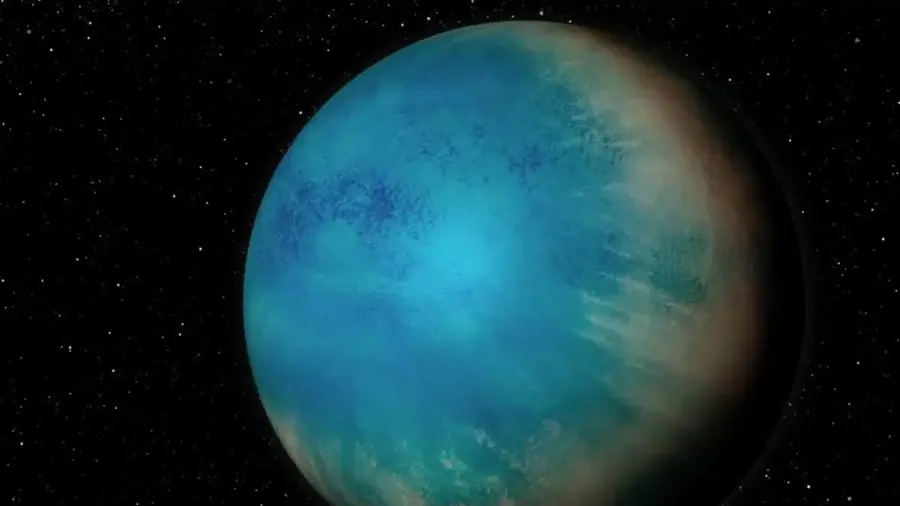Best candidate for habitable water worlds found
- March 21, 2024
- 0
Based on spectral data from “James Webb” and the results of computer modeling of the atmosphere, astronomers showed that exoplanet LHS 1140 b is an ocean world. Moreover,
Based on spectral data from “James Webb” and the results of computer modeling of the atmosphere, astronomers showed that exoplanet LHS 1140 b is an ocean world. Moreover,

Based on spectral data from “James Webb” and the results of computer modeling of the atmosphere, astronomers showed that exoplanet LHS 1140 b is an ocean world. Moreover, according to its characteristics, this is the best potentially habitable world today, suitable for close study. Until recently, scientists were looking for exoplanets for simple detection purposes. As before, astronomers sometimes find unusual objects, such as a system of six “resonant” exoplanets. However, they are now much more actively searching for exoplanets that we can study in more detail with existing instruments.
The potential habitability of an exoplanet depends on many factors, but even more conditions are imposed by the tools at our disposal. First of all, the system must be located close to us. Second, in order to study an exoplanet’s atmosphere, it needs to fly close enough to the star. Third, it should have a short orbital period so that it does not have to wait decades for another flight. It is difficult for an exoplanet this close to the star to maintain conditions. At least the star should be calm and not too burned. For example, it could be a red dwarf (spectral class M). The planet itself must be as small as Earth.
Over the past years, it has been possible to discover about one and a half dozen planets with a diameter of less than 1.5 times the diameter of the Earth. There are also mini-Neptunes that could be water worlds if they were far from the star. Unfortunately, simulations of the climate and conditions on such planets have shown that they require only 0.3 of the radiation Earth receives from the Sun to trigger an unstoppable greenhouse effect (rendering the planet uninhabitable). Therefore, liquid water is unlikely to be stored in hot mini-Neptunes.
Astronomers from the Jet Propulsion Laboratory and the California Institute of Technology (USA) have managed to find a water world that is in all respects suitable for further research. It turned out to be the planet LHS 1140 b, the first description of which was published in 2017. It flies to the red dwarf LHS 1140, which is 48.8 light-years away from us, which is six times smaller than the Sun in mass and radius (15%). Further studies have shown that LHS 1140 b may be a normal Earth-like planet with an N atmosphere.2-CO2 or a water world with a hydrogen-rich atmosphere.
The authors of the new study used data from the James Webb Space Telescope to more accurately characterize the exoplanet. They expected to see an atmosphere rich in hydrogen mixed with water vapor and other gases such as methane and carbon dioxide. But precisely these impurities predicted by computer modeling could not be detected by the telescope. In addition, the hypotheses regarding dense clouds and fog did not coincide with the observation results.
Moreover, according to the researchers, any large, hydrogen-rich atmosphere in the conditions of LHS 1140 b should be accompanied by large amounts of methane. If the planet does not have such a dense hydrogen atmosphere, the extremely low density of this world can be explained only by the presence of a large liquid ocean (or the absence of a core), but this is unlikely.
Under conditions of weak radiation from the star (42% of the terrestrial) and a thick layer of water (10% of the planet’s mass), the mantle in LHS 1140 b should be icy. At very high pressures, water ice can remain solid even at high temperatures (exotic ice), despite the presence of an ocean of liquid water above it. It is probably partially or completely mixed with the deeper rock mantle.
Presumably, in the process of formation, the planet accumulated ices rich in carbon and nitrogen, then its atmosphere should consist mainly of carbon dioxide and nitrogen sludge. Its atmosphere is not dominated by hydrogen, so LHS 1140 b may be a hot ocean planet. But if the planet supports relatively concentrated CO2, even in cold conditions/The N2 atmosphere could store a liquid ocean.
Simulations showed that with enough observations (at least nine flybys of a planet rather than a star) scientists could confirm the existence of CO.2-atmosphere. Overall, LHS 1140 b is a very interesting, potentially life-like aquatic world that can be explored today with James Webb instruments.
The work was made open access on the following date: arXiv and sent to the journal for review Astrophysics Journal Letters.
Source: Port Altele
As an experienced journalist and author, Mary has been reporting on the latest news and trends for over 5 years. With a passion for uncovering the stories behind the headlines, Mary has earned a reputation as a trusted voice in the world of journalism. Her writing style is insightful, engaging and thought-provoking, as she takes a deep dive into the most pressing issues of our time.